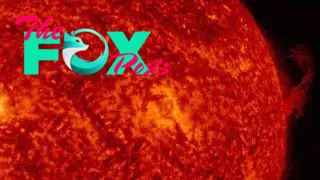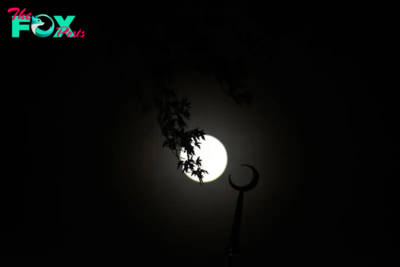Science
10 weird things that happen during a solar eclipse
On April 8, a total solar eclipse will be visible in the skies above 15 U.S. states, as well as parts of Canada and Mexico. Millions of viewers within the path of totality will see eerie darkness in the daytime, while countless others will experience a partial across that will be visible across the entire contiguous U.S.
Whether or not you plan to see the total phase of the eclipse, it should still be spectacular — and it may still have a few freaky effects. An eclipse "is the most unnatural natural phenomenon you'll ever experience," Tyler Nordgren, an astronomer, artist and author who frequently works with the National Park Service, told Live Science in an interview. Here are a few of the weird things that you might experience during a solar eclipse.
1. Baily's beads

If you view a total solar eclipse (safely, with appropriate eye protection), you might notice a sliver of light around the moon's edge that appears beaded, like a necklace. This phenomenon is known as "Baily's beads." Named for astronomer Francis Baily, who described the effect in 1836, it is caused by sunlight interacting with the moon's uneven topography.
2. Solar prominences

Solar prominences, also known as filaments, are huge plasma-and-magnetic-field structures that arise from the sun's surface. Normally, we can't see these protuberances from Earth. But during an eclipse, they may be visible behind the moon, appearing like petals on a flower.
A note of caution: DO NOT look for solar prominences or Baily's beads with your naked eyes! Always wear eclipse glasses.
3. Plunging temperatures

Bring a jacket to your eclipse viewing, because temperatures can drop quickly as the moon covers the sun. How much depends on the location, time of year and type of eclipse. Most places see temperature drops of around 5 to 10 degrees Fahrenheit (2.8 to 5.6 degrees Celsius) during a total eclipse, though the plunge can be larger; one newspaper in 1834 reported a (somewhat improbable) change of 28 F. Annular eclipses usually see a less-extreme temperature change, but things may still get chilly. "It feels like a cloud has come over the sun," Nordgren said. "But there is no cloud over the sun, which just heightens the weirdness."
4. Changing winds

Along with the temperature drop, regions experiencing an eclipse can expect a change in wind direction. First, the wind dies down as the moon gets closer to blocking the sun. After the moon reaches peak coverage, the wind starts to kick back up, often blowing in a different direction, a 2016 study found. This effect occurs with total, annular and even partial eclipses.
-

 Science3h ago
Science3h agoHow to See the ‘Beaver’ Supermoon—the last of 2024
-

 Science5d ago
Science5d agoInside Capitol Hill’s Latest UFO Hearings
-

 Science5d ago
Science5d agoYou Won’t Want to Miss the Leonid Meteor Shower. Here’s How and When You Can See It
-

 Science5d ago
Science5d agoHere’s What Trump’s Win Means for NASA
-

 Science1w ago
Science1w agoWhy Risky Wildfire Zones Have Been Increasing Around the World
-

 Science1w ago
Science1w agoIt’s Time to Redefine What a Megafire Is in the Climate Change Era
-

 Science1w ago
Science1w ago4 Astronauts Return to Earth After Being Delayed by Boeing’s Capsule Trouble and Hurricane Milton
-

 Science1w ago
Science1w agoThe Elegance and Awkwardness of NASA’s New Moon Suit, Designed by Axiom and Prada



























